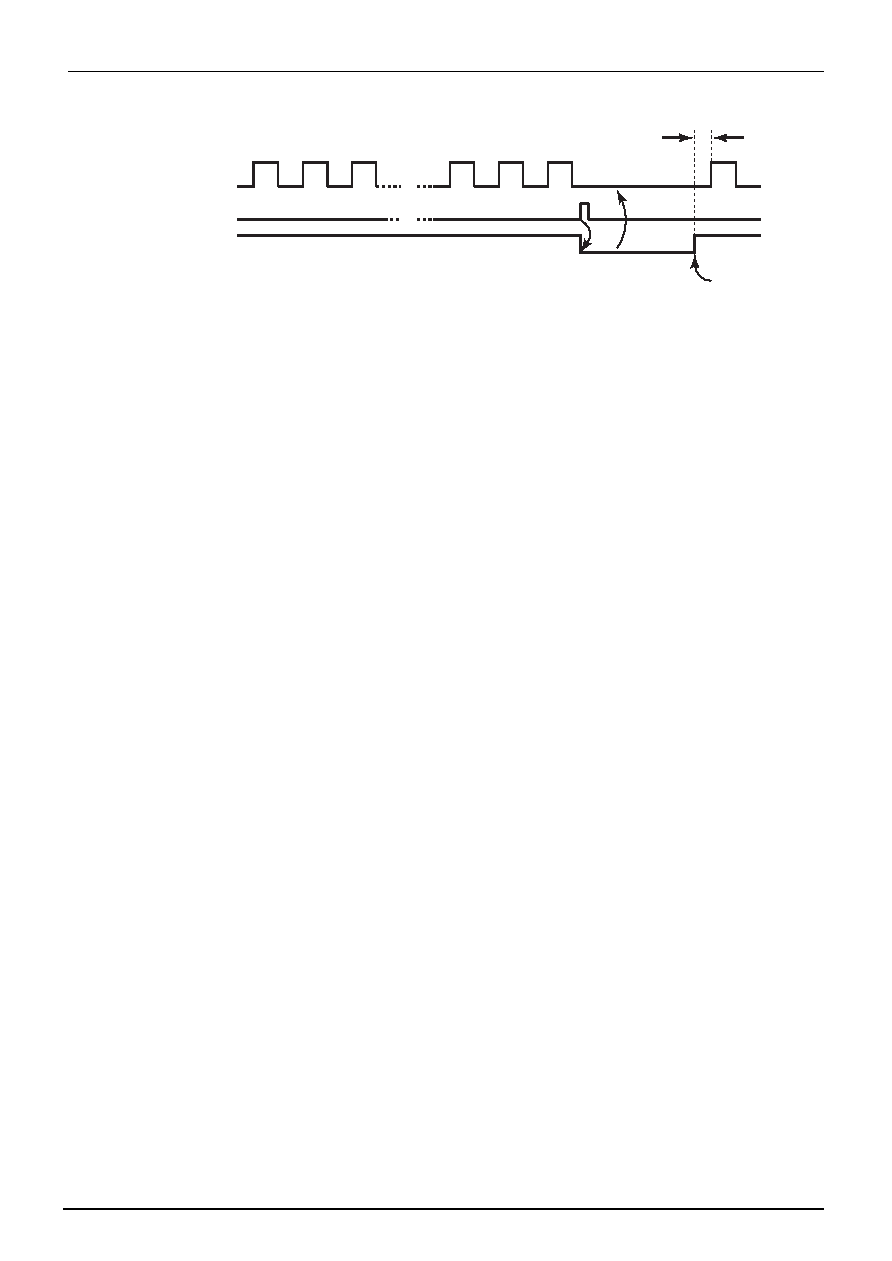- 您現(xiàn)在的位置:買賣IC網(wǎng) > PDF目錄300033 > TMP89FH42UG 8-BIT, FLASH, 10 MHz, MICROCONTROLLER, PQFP44 PDF資料下載
參數(shù)資料
| 型號: | TMP89FH42UG |
| 元件分類: | 微控制器/微處理器 |
| 英文描述: | 8-BIT, FLASH, 10 MHz, MICROCONTROLLER, PQFP44 |
| 封裝: | 10 X 10 MM, 0.80 MM PITCH, LEAD FREE, PLASTIC, LQFP-44 |
| 文件頁數(shù): | 229/317頁 |
| 文件大小: | 6434K |
| 代理商: | TMP89FH42UG |
第1頁第2頁第3頁第4頁第5頁第6頁第7頁第8頁第9頁第10頁第11頁第12頁第13頁第14頁第15頁第16頁第17頁第18頁第19頁第20頁第21頁第22頁第23頁第24頁第25頁第26頁第27頁第28頁第29頁第30頁第31頁第32頁第33頁第34頁第35頁第36頁第37頁第38頁第39頁第40頁第41頁第42頁第43頁第44頁第45頁第46頁第47頁第48頁第49頁第50頁第51頁第52頁第53頁第54頁第55頁第56頁第57頁第58頁第59頁第60頁第61頁第62頁第63頁第64頁第65頁第66頁第67頁第68頁第69頁第70頁第71頁第72頁第73頁第74頁第75頁第76頁第77頁第78頁第79頁第80頁第81頁第82頁第83頁第84頁第85頁第86頁第87頁第88頁第89頁第90頁第91頁第92頁第93頁第94頁第95頁第96頁第97頁第98頁第99頁第100頁第101頁第102頁第103頁第104頁第105頁第106頁第107頁第108頁第109頁第110頁第111頁第112頁第113頁第114頁第115頁第116頁第117頁第118頁第119頁第120頁第121頁第122頁第123頁第124頁第125頁第126頁第127頁第128頁第129頁第130頁第131頁第132頁第133頁第134頁第135頁第136頁第137頁第138頁第139頁第140頁第141頁第142頁第143頁第144頁第145頁第146頁第147頁第148頁第149頁第150頁第151頁第152頁第153頁第154頁第155頁第156頁第157頁第158頁第159頁第160頁第161頁第162頁第163頁第164頁第165頁第166頁第167頁第168頁第169頁第170頁第171頁第172頁第173頁第174頁第175頁第176頁第177頁第178頁第179頁第180頁第181頁第182頁第183頁第184頁第185頁第186頁第187頁第188頁第189頁第190頁第191頁第192頁第193頁第194頁第195頁第196頁第197頁第198頁第199頁第200頁第201頁第202頁第203頁第204頁第205頁第206頁第207頁第208頁第209頁第210頁第211頁第212頁第213頁第214頁第215頁第216頁第217頁第218頁第219頁第220頁第221頁第222頁第223頁第224頁第225頁第226頁第227頁第228頁當(dāng)前第229頁第230頁第231頁第232頁第233頁第234頁第235頁第236頁第237頁第238頁第239頁第240頁第241頁第242頁第243頁第244頁第245頁第246頁第247頁第248頁第249頁第250頁第251頁第252頁第253頁第254頁第255頁第256頁第257頁第258頁第259頁第260頁第261頁第262頁第263頁第264頁第265頁第266頁第267頁第268頁第269頁第270頁第271頁第272頁第273頁第274頁第275頁第276頁第277頁第278頁第279頁第280頁第281頁第282頁第283頁第284頁第285頁第286頁第287頁第288頁第289頁第290頁第291頁第292頁第293頁第294頁第295頁第296頁第297頁第298頁第299頁第300頁第301頁第302頁第303頁第304頁第305頁第306頁第307頁第308頁第309頁第310頁第311頁第312頁第313頁第314頁第315頁第316頁第317頁

23
789
1
tLOW
SCL0 pin
SCL0 pin is pulled
to low when
SBI0CR2<PIN> is "0"
Set SBI0CR2<PIN> to "1" or
write data to SBI0DBR
SBI0CR2<PIN>
INTSBI0 interrupt request
Figure 18-11 SBI0CR2<PIN> and SCL0 Pin
Writing data to SBI0DBR sets SBI0CR2<PIN> to "1". The time from SBI0CR2<PIN> being set to "1" until
the SBI0 pin is released takes tLOW.
Although SBI0CR2<PIN> can be set to "1" by the software, SBI0CR2<PIN> can not be cleared to "0" by the
software.
18.4.9
Setting of serial bus interface mode
SBI0CR2<SBIM> is used to set serial bus interface mode.
Setting SBI0CR2<SBIM> to "1" selects the serial bus interface mode. Setting it to "0" selects the port mode.
Set SBI0CR2<SBIM> to "1" in order to set serial bus interface mode. Before setting of serial bus interface
mode, confirm serial bus interface pins in a high level, and then, write "1" to SBI0CR2<SBIM>.
And switch a port mode after confirming that a bus is free and set SBI0CR2<SBIM> to "0".
Note:When SBI0CR2<SBIM> is "0", no data can be written to SBI0CR2 except SBI0CR2<SBIM>. Before
setting values to SBI0CR2, write "1" to SBI0CR2<SBIM> to activate the serial bus interface mode.
18.4.10
Software reset
The serial bus interface circuit has a software reset function that initializes the serial bus interface circuit. If
the serial bus interface circuit locks up, for example, due to noise, it can be initialized by using this function.
A software reset is generated by writing "10" and then "01" to SBI0CR2<SWRST>.
After a software reset is generated, the serial bus interface circuit is initialized and all the bits of SBI0CR2
register, except SBI0CR2<SBIM> and the SBI0CR1, I2C0AR<SA> and SBI0SR2 registers, are initialized.
18.4.11
Arbitration lost detection monitor
Since more than one master device can exist simultaneously on a bus, a bus arbitration procedure is imple-
mented in order to guarantee the contents of transferred data.
Data on the SDA line is used for bus arbitration of the I2C bus.
The following shows an example of a bus arbitration procedure when two master devices exist simultaneously
on a bus. Master 1 and Master 2 output the same data until point "a". After that, when Master 1 outputs "1" and
Master 2 outputs "0", since the SDA line of a bus is wired AND, the SDA line is pulled down to the low level
by Master 2. When the SCL line of a bus is pulled-up at point "b", the slave device reads data on the SDA line,
that is data in Master 2. Data transmitted from Master 1 becomes invalid. The state in Master 1 is called "arbitration
TMP89FH42
18. Serial Bus Interface (SBI)
18.4 Functions
Page 288
RA002
相關(guān)PDF資料 |
PDF描述 |
|---|---|
| TMP91FW60FG | MICROCONTROLLER, PQFP100 |
| TMPG06-24A-4 | 400 W, UNIDIRECTIONAL, SILICON, TVS DIODE |
| TMPG06-8.2A-23 | 400 W, UNIDIRECTIONAL, SILICON, TVS DIODE |
| TMPZ5250LR | 20 V, SILICON, UNIDIRECTIONAL VOLTAGE REGULATOR DIODE, TO-236AB |
| TMPZ5233R | 6 V, SILICON, UNIDIRECTIONAL VOLTAGE REGULATOR DIODE, TO-236AA |
相關(guān)代理商/技術(shù)參數(shù) |
參數(shù)描述 |
|---|---|
| TMP89FH42UG(JZ) | 制造商:Toshiba America Electronic Components 功能描述:MCU 8BIT 16384BYTES FLASH 44LQFP |
| TMP89FH46 | 制造商:TOSHIBA 制造商全稱:Toshiba Semiconductor 功能描述:8 Bit Microcontroller |
| TMP89FH46DUG | 制造商:TOSHIBA 制造商全稱:Toshiba Semiconductor 功能描述:Microcomputers / Microcomputer Development Systems |
| TMP89FH46LDUG | 制造商:TOSHIBA 制造商全稱:Toshiba Semiconductor 功能描述:Microcomputers / Microcomputer Development Systems |
| TMP89FM40NG | 制造商:TOSHIBA 制造商全稱:Toshiba Semiconductor 功能描述:Microcomputers / Microcomputer Development Systems |
發(fā)布緊急采購,3分鐘左右您將得到回復(fù)。